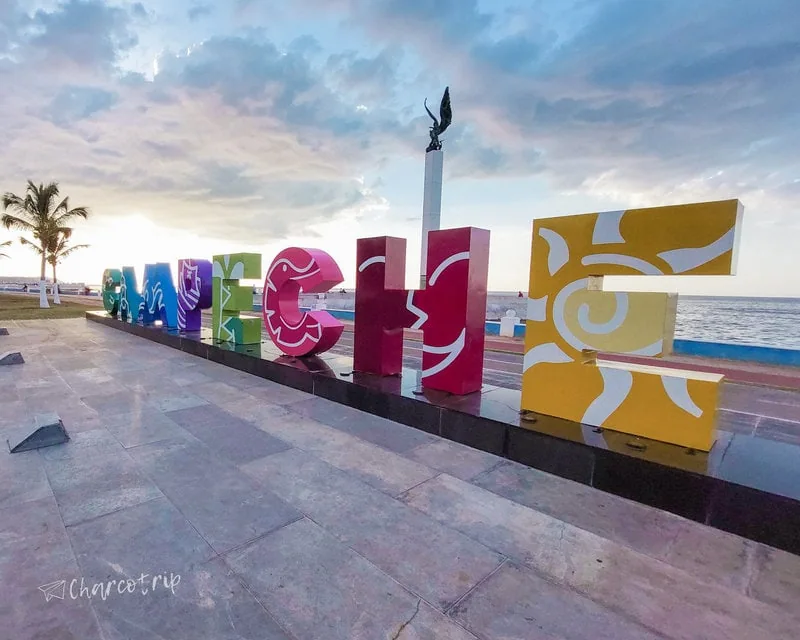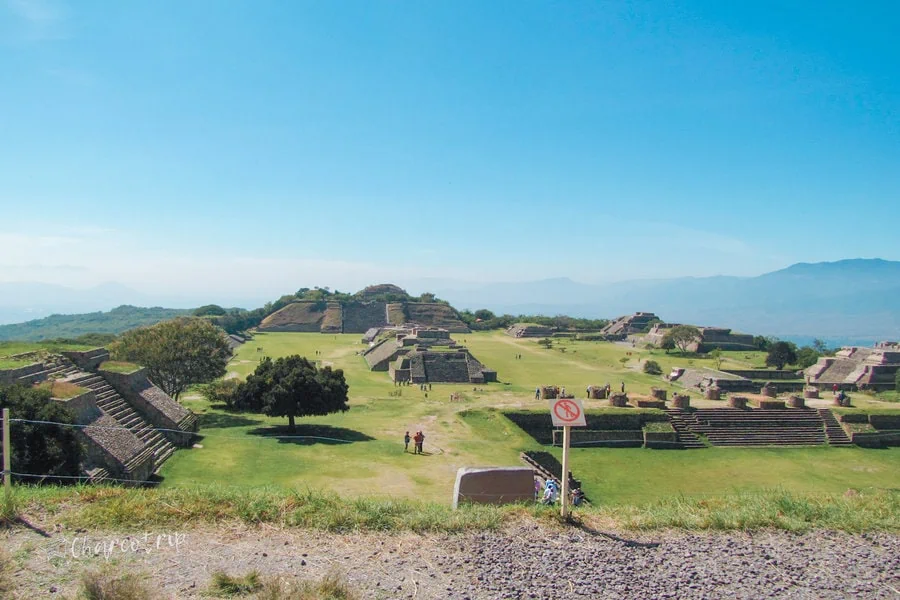Let’s explore the ancient Mayan ruins of Kabah in the Puuc region of Yucatán, Mexico. Discover the rich history and stunning architecture of this archaeological site.
Let’s explore the ancient Mayan ruins of Kabah in the Puuc region of Yucatán, Mexico. Discover the rich history and stunning architecture of this archaeological site.
We visited this site during our trip to the Yucatan peninsula and I must say that I was speechless when I saw these Mayan ruins on the Puuc sites. As a Mexican, I love discovering the archeological sites of my country, and Kabah was no exception. Who needs Indiana Jones when you can have your own encounter with history?
Overview
☑️ Archaeological site inhabited since around 400 BC, its Palace of Masks or Codz Poop stands out.
📍 How to get there? By car, taxi or organized tour.
💵 Price: 80 pesos per person.
❓Did we like it?
Yes, it is a place with much fewer people than other more popular ones, and its masks are impressive.
Imagine walking through ancient streets dominated by majestic buildings and temples, each telling its own silent story of a glorious past.
The ornate facades, covered in intricate detail, transport you to a time when the Maya ruled these grounds.
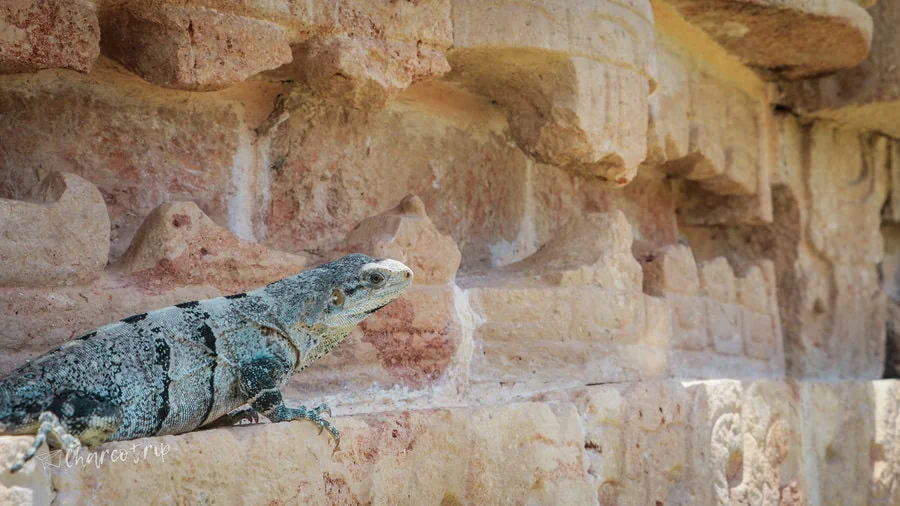
So if you’re looking for a dose of adventure and culture, look no further. Kabah awaits you with open arms, ready to keep secrets and give you an unforgettable experience. Here we will show you the necessary information so that you can visit it and what you can expect to see.
A place relatively close to Uxmal, which is part of the Puuc route, and for those of us of my generation, it will also make us think of a pop music group that was quite popular in our school days. I am referring to the archaeological zone of Kabah, a legacy of the Mayan civilization in Yucatan.
Besides Kabah and Uxmal the Puuc route includes the sites of Labná, Sayil and Xlapak.
🤩 Book your tour to visit Kabah
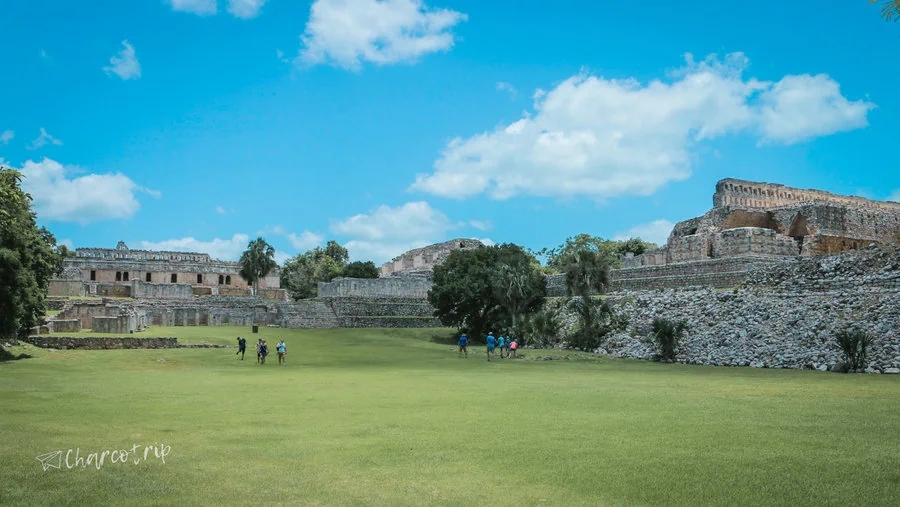
Brief history of Kabah
Kabah is the original name of this Mayan city, since it is mentioned in the Chilam Balam, the name of several books that recount facts and historical circumstances of the Mayan civilization.
The area occupies about 1.2 square km and, in fact, there are still mounds that have not been explored, some green mountains can be seen on the site, which are yet to be explored.
The lack of water sources forced the use of chultuns, to collect rainwater. These can be viewed on the site. The buildings of the city are connected by causeways, or sacbés.
One of these sacbé reaches Uxmal and you can see a kind of triumphal arch that indicates where to take the path, this arch, unfortunately we couldn’t see.
The initial comprehensive report on the ruin was published by John Lloyd Stephens and Frederick Catherwood in 1843.
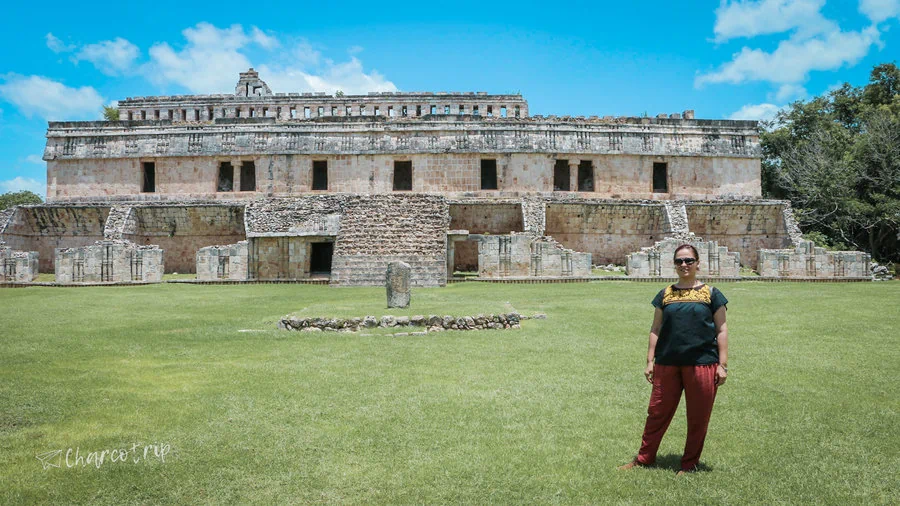
The origin of the name Kabah
Its name has been interpreted as “Lord of the strong or powerful hand”.
In 1996 the Mayan sites in the Puuc region were recognized as a World Heritage Site by UNESCO.
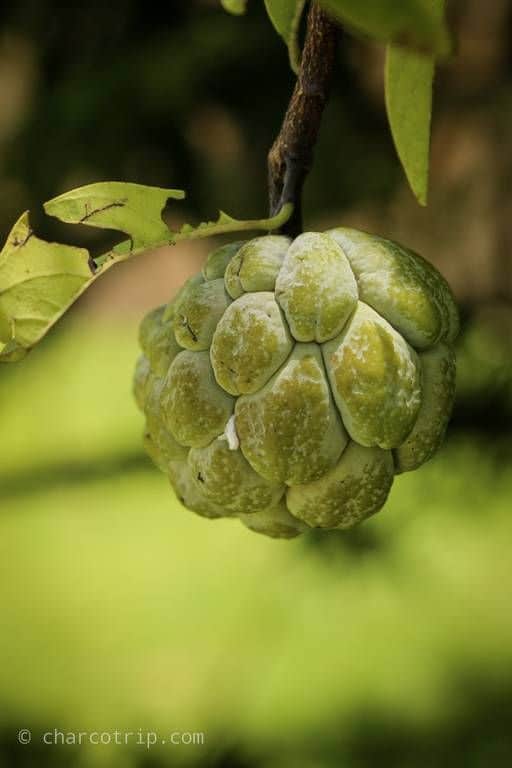
How to get to the city of Kabah from Merida?
Located in the Yucatan peninsula, south of Merida, the Kabah ruins rank as the second-largest archaeological site within the Puuc region, following Uxmal in size.
To take advantage of the whole day, this time we took a tour from the city of Merida that would take us to several maya ruins. Uxmal was the first on the route, followed by Kabah.
Other options exist and they are:
- From Uxmal to Kabah by taxi: from Uxmal you can hire a taxi that includes waiting at the site and return to Uxmal, from where you can take the bus as I explained in the article on the visit to Uxmal.
- By car: Kabah is located 23 km southeast of Uxmal on highway 261. So if you plan to rent a car on your trip to Yucatan, it is a pretty practical option.
- Organized tour: the option we take. The group was small and it suited us.
🤩 Book your tour to visit Kabah

What is the entrance fee to the Mayan ruins of Kabah Mexico?
The general admission price is 80 pesos. (Updated 2024)
🤩 Book your tour to visit Kabah
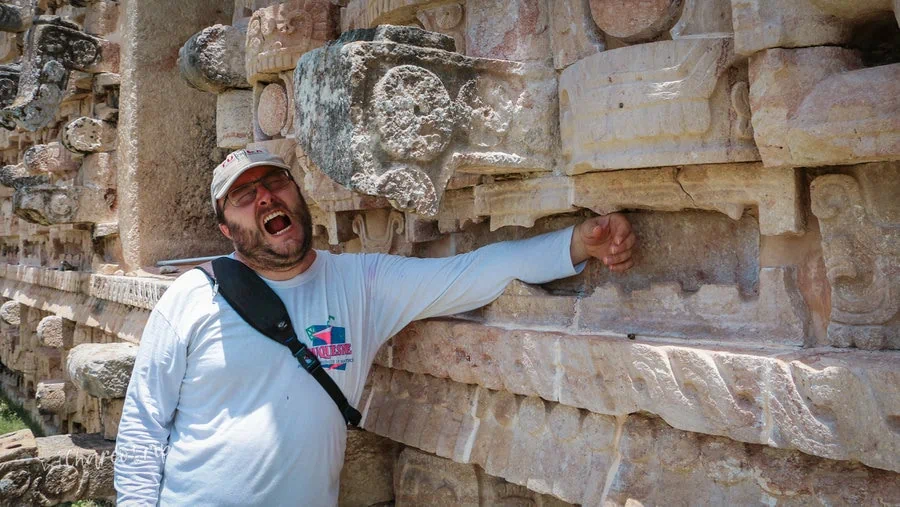
Can you enter for free?
Yes. On Sundays, admission is free for all Mexican citizens.
In addition, every day there is free admission for children under 13 years of age.
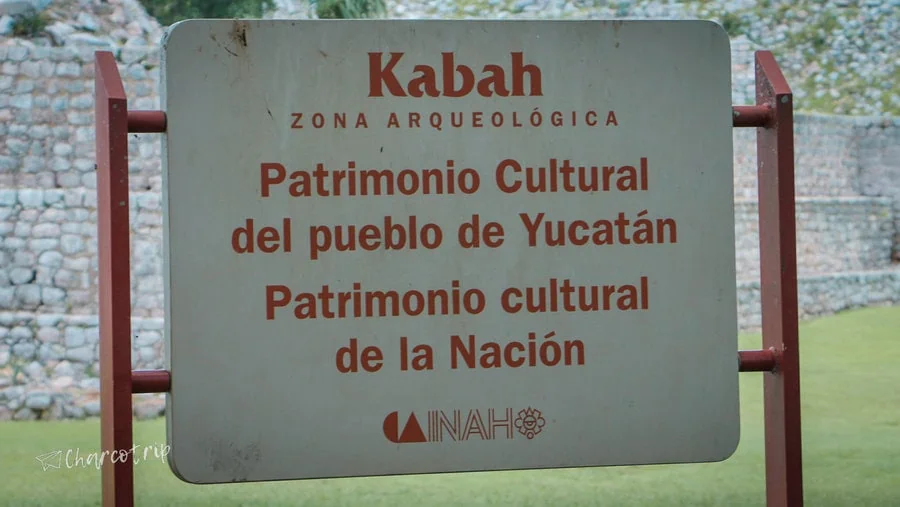
Site of Kabah: opening hours
The site can be visited from Monday to Sunday between 8 AM and 5 PM. Consider that the last access is at 4 PM.
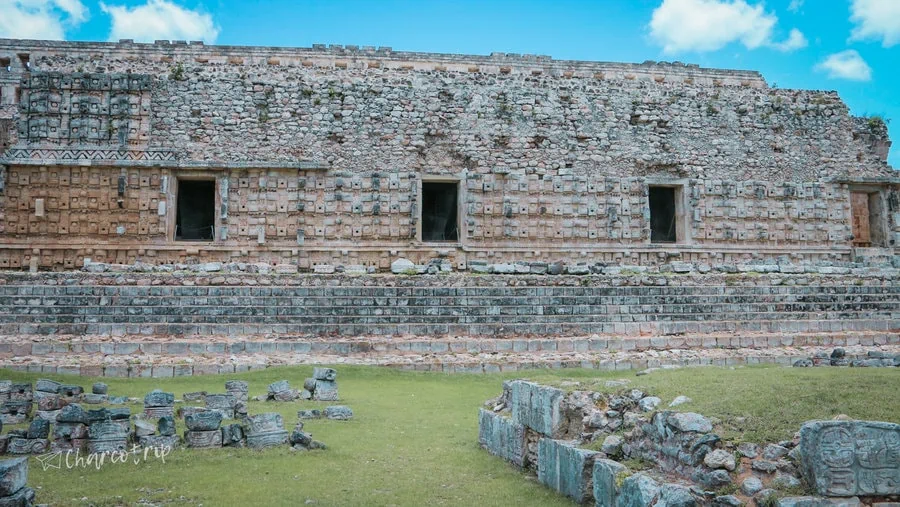
What to see at the Kabah ruins?
Upon arrival, I was amazed by the imposing architecture of its ruins. The ornate details and sculptures transport you back in time, and you can imagine what life was like in this ancient civilization. The buildings and structures are simply stunning, and I can’t explain how exciting it was to walk among them.
In addition, the peace and tranquility you experience on a visit to Kabah is simply incomparable. I felt completely connected with the energy of the place and was able to enjoy a unique experience.
The ruins at Kabah are not a huge site itself, at least what can be visited, there are other areas of the site that are unrestored, for example: the Great Pyramid or the Quadrangle. So, always keep in mind that what you can visit is a small portion of the site, this is why it seems small compared with others.
🤩 Book your tour to visit Kabah
Palace Group
It is the largest building in the city and due to the number of chultuns around it, you can see that plenty of people lived there.
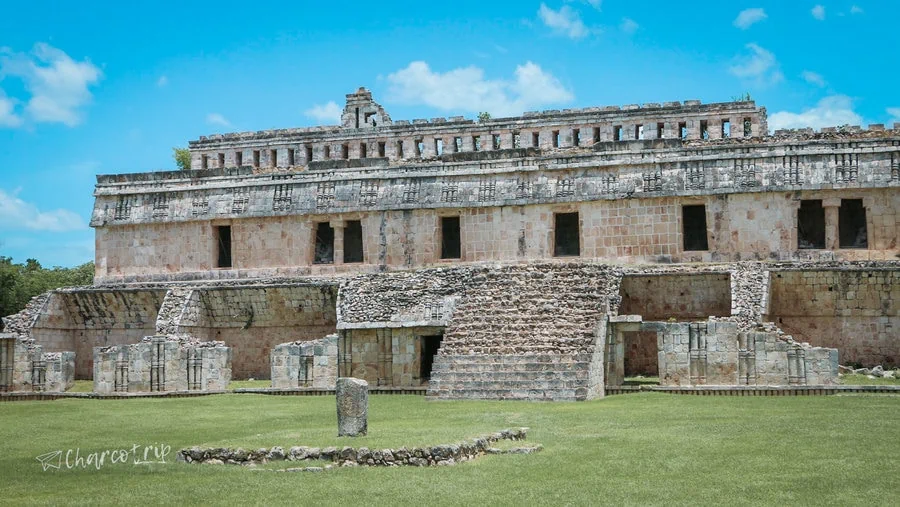
The Codz Poop complex or Palace of the Masks
The translation would be “rolled carpet” for this building, which is also known as the Palace of the Masks. The façade has masks depicting Chaac, the rain god, like the ones we already saw in Uxmal, but here they are even more impressive for being stacked on one wall.
Every mask consists of 30 intricately carved stones, meticulously arranged to form an expansive and multidimensional mosaic.
In addition, you can see a fretwork of intertwined snakes.
🤩 Book your tour to visit Kabah
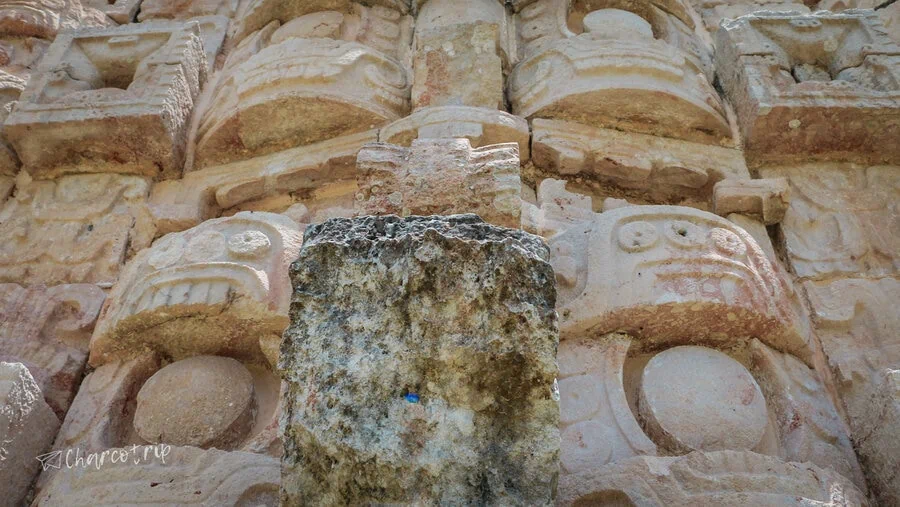
The truth is that it is a very impressive construction. It seems that at any moment it will come to life. Although, the only life we had within reach was that of the iguana that walked among Chaac’s masks.

Altar of the Glyphs
This structure has bas-relief glyphs, which are suspected to have been made on the already built altar, since some of the symbols occupy more than one stone.
The style of these glyphs is different from the other, more detailed inscriptions in the Kabah archaeological zone. The message of this inscription has not yet been fully deciphered.

More images about Kabah
On the site there are some statues of warriors, some without heads, which I found impressive, you can see them at the top of a building on some triangular frets.
In addition to seeing some very detailed reliefs on several columns, much more detailed than those on the glyph altar. In these reliefs, you can still see the red paint that covered them.
🤩 Book your tour to visit Kabah

During the visit, we met a baby iguana, how cute!
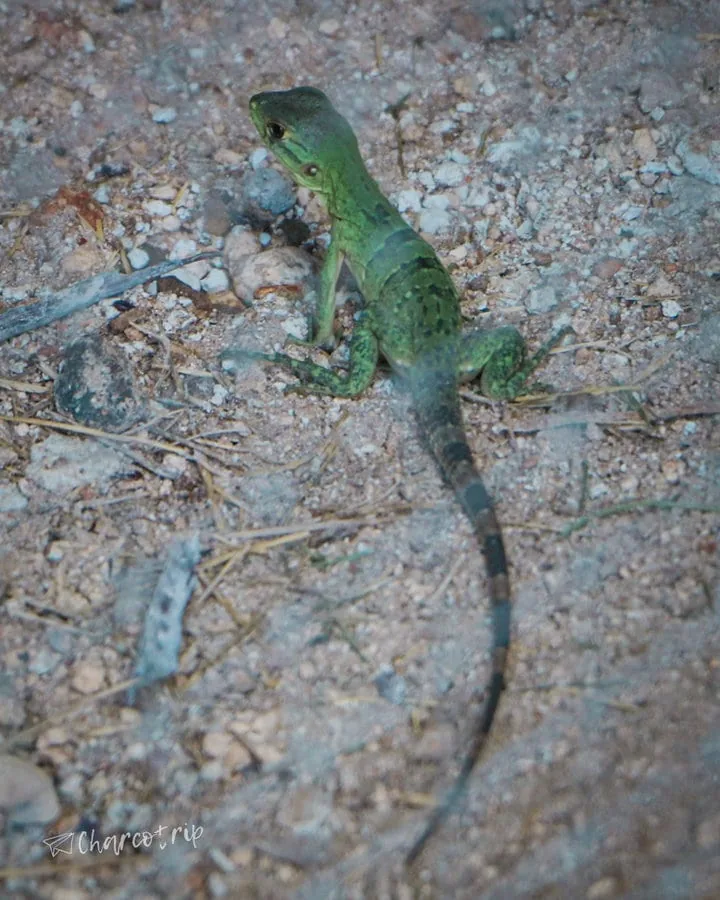
Frequently Asked Questions about the Kabah Archaeological Site
What is the archaeological zone of Kabah?
The archaeological zone of Kabah is a site of historical and cultural importance located in the state of Yucatán, in Mexico. It is known for its Mayan architecture and belongs to the Puuc style. Kabah is renowned for its intricate decorations and carvings, especially the symbols of the god Chaac.
Where is the archaeological zone of Kabah located?
The archaeological zone of Kabah is located 23 km southeast of Uxmal along the federal highway in Yucatan, Mexico.
What is the history of Kabah?
The Kabah Archaeological Site dates back to the period of the Mayan civilization, was inhabited from around 400 B.C. and reached its splendor between the years 750 and 900 AD. In this era, the Puuc region experienced a ruling Kabah dynasty. However, after the Spanish conquest, Kabah was abandoned and its history lost for centuries. It was rediscovered and restored in the 20th century by the National Institute of Anthropology and History (INAH).
What can be seen in the archaeological zone of Kabah?
At the Kabah Archaeological Site, you can see several Mayan structures, including temples, palaces, and residential buildings. The most famous structure at the site is the “Palace of the Masks,” which is adorned with intricate stone masks of a Mayan god.
Can I climb the structures at the Kabah Archaeological Site?
At the Kabah Archaeological Site, you can see several Mayan structures, including temples, palaces, and residential buildings. The most famous structure at the site is the “Palace of the Masks,” which is adorned with intricate stone masks of a Mayan god.
Can I climb the structures at the Kabah Archaeological Site?
For the preservation of the site and visitor safety, climbing the structures at the Kabah Archaeological Site is generally not allowed. However, you can explore the site on foot and get a close view of the impressive architecture.
What should I bring with me when visiting the Kabah Archaeological Site?
When visiting the Kabah Archaeological Site, it is recommended to bring comfortable walking shoes, sun protection, insect repellent, and drinking water. It is also a good idea to have a camera to capture the stunning ruins.
What is the significance of the masks at the Kabah Archaeological Site?
The masks at the Kabah Archaeological Site are believed to depict Chaac, the Mayan god of rain. The masks are thought to be symbolic representations of the Mayans’ reverence for Chaac and their reliance on him for agricultural prosperity.
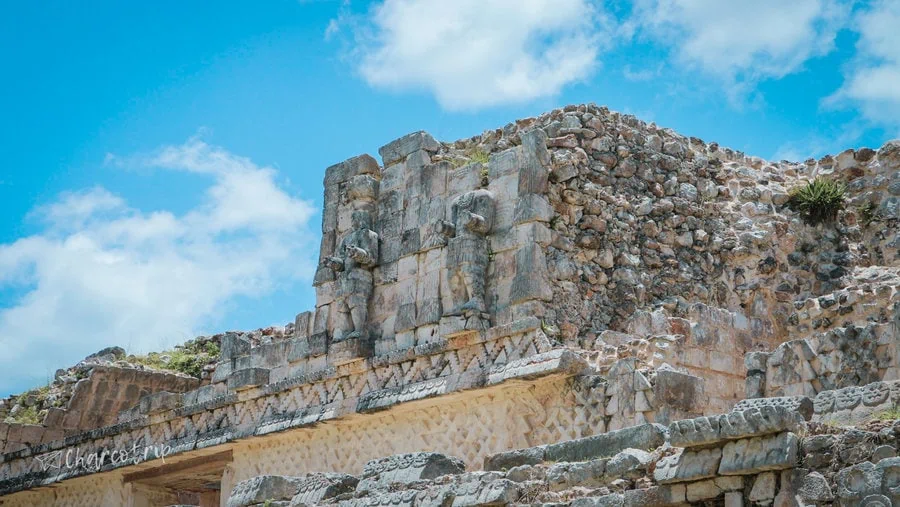
Kabah, a site worth visiting
Although we did visit Kabah quickly, I can say that it was worth it. The truth is that the codz poop was what impressed me the most about the site, followed by the statues of warriors.
If you are planning a trip to the Yucatan peninsula, I recommend including a visit to the Kabah Archaeological Zone in your itinerary around the state. You will not regret.
But above all, the great peace that is breathed in this archaeological zone. Nothing to compare with the bustle of Chichén Itzá.
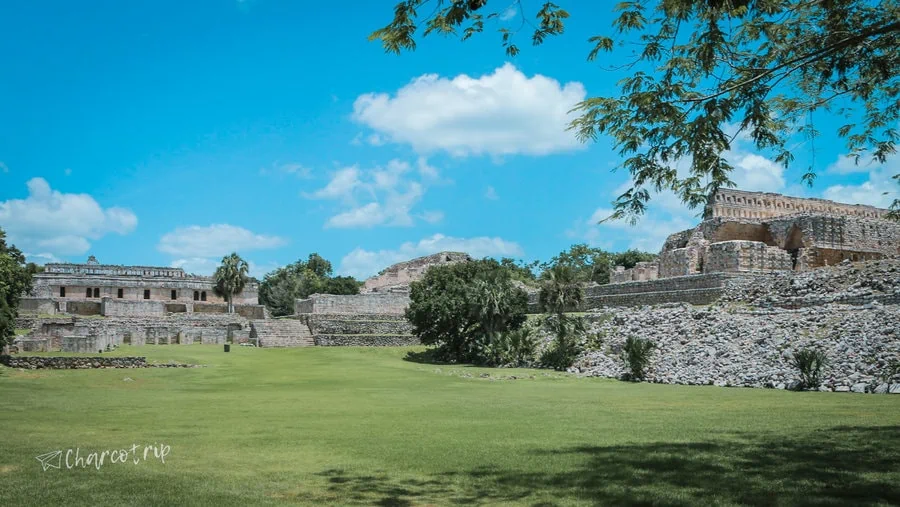
Some of the links in this article include affiliate links. This means that if you buy a product listed here by following these links, we'll receive a commission. The use of this link does not increase the final price for you and thus helps us to keep our blog alive.

